Revolutionize Your Lab Workflow with QIAcube – The Ultimate Automated DNA Extraction Solution
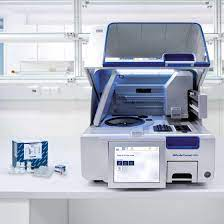
Introduction to QIAcube: The Ultimate Automated DNA Extraction Solution for Academic Research Laboratories
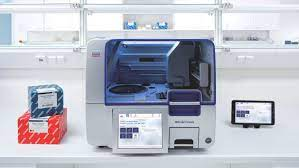
DNA extraction is a crucial step in many experiments, from genotyping to gene expression analysis, carried out in academic research labs. Traditional DNA extraction techniques, on the other hand, can be laborious, time-consuming, and prone to human error, which can limit the accuracy and reproducibility of your results. This is where QIAcube, an automated DNA extraction solution, enters the picture, revolutionizing the way DNA is extracted in academic research laboratories.
What is QIAcube?
QIAcube is an automated system for DNA extraction that combines Qiagen’s spin column technology with advanced robotics and software. It streamlines the DNA extraction process, from sample lysis to elution, and eliminates the need for manual pipetting, centrifugation, and other tedious and error-prone steps. With QIAcube, you can extract high-quality DNA from a variety of sample types, including blood, tissues, and cultured cells, in just a few hours, with minimal hands-on time.
Benefits of QIAcube for Academic Research Laboratories
QIAcube’s advantages go beyond labour and time savings. By automating DNA extraction, QIAcube also lowers the possibility of human error, increases the accuracy and reproducibility of your results, and improves the convenience and safety of your lab workflow. Without specialized knowledge or experience, you can extract DNA consistently and effectively with QIAcube.
Customized Protocols for Your Unique Needs
Additionally, QIAcube gives you the freedom to adapt your DNA extraction protocols to suit your particular requirements. In addition to pre-validated protocols for a variety of sample types and applications, Qiagen’s spin column kits and software allow you to design and refine your own protocols. This enables you to get the best quality and yield of DNA while also adjusting your DNA extraction to suit particular research questions and experimental setups.
Conclusion
To sum it up, QIAcube is the best automated DNA extraction method for use in academic research labs. It streamlines the DNA extraction process and enhances the reproducibility and accuracy of your results by combining the strength of Qiagen’s spin column technology with cutting-edge robotics and software. With QIAcube, you can extract DNA reliably and effectively, modify your protocols to suit your particular requirements, and advance your research.
Streamline Your Lab Workflow with QIAcube and Qiagen Spin Column Kits
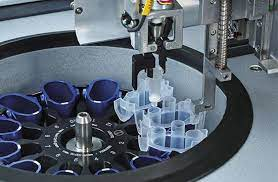
Time is of the essence in a busy lab setting. Any measures that can be taken to simplify processes and shorten the amount of time necessary for repetitive tasks can free up time for more worthwhile activities. Such a solution is provided by the QIAcube and Qiagen spin column kits, which together offer a quick and effective DNA extraction system that can completely change the way your lab operates.
What are Qiagen Spin Column Kits?
Qiagen spin column kits are designed for the rapid extraction and purification of high-quality DNA from a wide range of sample types, including blood, tissues, and cultured cells. They are optimized for use with QIAcube, allowing for easy automation of the DNA extraction process. The kits contain all of the necessary reagents and spin columns, as well as detailed protocols, for consistent and reliable results every time.
How does QIAcube Work with Qiagen Spin Column Kits?
QIAcube is an automated DNA extraction system that can be programmed to follow specific protocols for the purification of DNA from a variety of sample types. Qiagen spin column kits are optimized for use with QIAcube, making it easy to automate the entire DNA extraction process. Simply load your samples and the necessary reagents into the QIAcube, and the system takes care of the rest. The robotic arm performs all the necessary pipetting, mixing, and centrifugation steps, while the software controls the process and tracks progress in real-time. Once the DNA extraction is complete, the system can also elute the DNA into a convenient storage format for downstream analysis.
Benefits of Streamlining Your Lab Workflow with QIAcube and Qiagen Spin Column Kits
The combination of QIAcube and Qiagen spin column kits offers numerous benefits to lab workflows. Automation reduces the time and effort required for DNA extraction, freeing up lab personnel to focus on other tasks. The consistency and reliability of the system ensure that results are reproducible, and the scalability of the system allows for efficient processing of large sample sets. The easy customization of protocols and the compatibility with a wide range of sample types make QIAcube and Qiagen spin column kits an ideal solution for academic research laboratories, diagnostic labs, and more.
Conclusion
In summary, streamlining your lab workflow with QIAcube and Qiagen spin column kits can offer numerous benefits to busy labs. Automating the DNA extraction process with QIAcube and using Qiagen spin column kits can reduce the time and effort required for DNA extraction, while ensuring consistent and reproducible results. The flexibility of the system allows for easy customization of protocols, making it an ideal solution for a wide range of sample types and applications. Consider implementing this system in your lab today to revolutionize your workflow.
Customized Protocols for DNA Extraction: How QIAcube Meets Your Lab’s Unique Needs
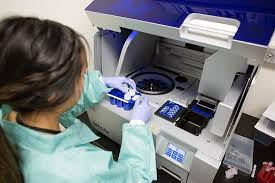
In any lab, the ability to customize protocols is crucial to achieving accurate and reliable results. The same is true for DNA extraction, where different sample types and applications require specific protocols tailored to their unique needs. The QIAcube automated DNA extraction system offers the flexibility to create and optimize protocols for your lab’s specific requirements, allowing you to achieve the highest quality and yield of DNA possible.
What are Customized Protocols?
Customized protocols are DNA extraction protocols that have been optimized for specific sample types or experimental conditions. They may include modifications to the standard Qiagen spin column protocol, such as changes in lysis buffer composition or incubation time, to achieve the best possible results for your unique needs. Customized protocols are particularly important for labs working with non-standard sample types or for those with specific research questions that require tailored DNA extraction protocols.
How Does QIAcube Enable Customized Protocols?
QIAcube offers the flexibility to create and optimize protocols for your lab’s unique needs, without requiring specialized expertise or training. The system comes with pre-validated protocols for a range of sample types and applications, but also allows for the creation and optimization of custom protocols using Qiagen spin column kits and software. The QIAcube software offers a simple and intuitive interface for creating, editing, and saving custom protocols, with the ability to adjust all parameters of the extraction process. The software also provides real-time tracking of the extraction process, allowing for easy troubleshooting and quality control.
Benefits of Customized Protocols with QIAcube
Customized protocols offer several benefits for DNA extraction in the lab. By tailoring the extraction protocol to your unique sample types and research questions, you can achieve the best possible results with the highest quality and yield of DNA. Customized protocols can also improve the efficiency and consistency of DNA extraction, reducing variability and increasing reproducibility. With QIAcube, the creation and optimization of customized protocols is made easy, allowing for flexibility in the lab’s workflow and the ability to achieve optimal results.
Conclusion
In summary, customized protocols are crucial for achieving accurate and reliable DNA extraction results in the lab. The QIAcube automated DNA extraction system offers the flexibility to create and optimize customized protocols for your lab’s specific needs, without requiring specialized expertise or training. With the ability to adjust all parameters of the extraction process, the software provides real-time tracking of the extraction process, allowing for easy troubleshooting and quality control. Consider implementing QIAcube in your lab today to achieve the highest quality and yield of DNA possible.
The Role of Spin Columns in QIAcube’s DNA Extraction Process, qiagen spin columns

If you’re looking for an automated DNA extraction solution that is efficient, reliable, and consistent, the QIAcube system may be just what you need. At the heart of QIAcube’s DNA extraction process are the Qiagen spin columns, which play a critical role in the purification and isolation of high-quality DNA.
Here are the key roles that spin columns play in QIAcube’s DNA extraction process:
- Binding of DNA: In the first step of the DNA extraction process, the sample is lysed and the DNA is released into solution. The DNA is then bound to the silica membrane within the Qiagen spin column, which selectively captures the DNA while leaving behind other unwanted cellular components.
- Washing of the Spin Column: After the DNA is bound to the silica membrane, the spin column is washed to remove any residual impurities, such as proteins or salts. This ensures that only pure DNA remains bound to the column.
- Elution of DNA: Finally, the pure DNA is eluted from the Qiagen spin column using a low-salt buffer, which dissolves the silica membrane and releases the DNA into solution. The eluted DNA can then be used for downstream applications such as PCR or sequencing.
QIAcube vs. Traditional DNA Extraction Methods: A Comparison in Academic Research Laboratories
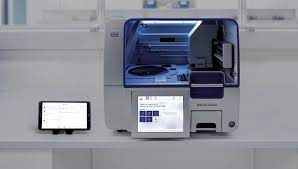
Traditional manual techniques and automated options like QIAcube have very different approaches to extracting high-quality nucleic acids in academic research labs. In contrast to manual methods, which can be labor- and time-intensive, QIAcube’s advanced digital capabilities and nominal supply voltages allow for quick and effective nucleic acid extraction with little user involvement.
Additionally, QIAcube offers DNA and RNA cleanup, which removes unwanted cellular components while selectively capturing high-quality nucleic acids. Manual methods, on the other hand, may be subject to variation and human error, resulting in inconsistent nucleic acid yields and quality.
Additionally, QIAcube’s standardised protocols and quality controls guarantee consistency and reproducibility across various samples. When replicating experiments or working with large datasets, this is especially crucial.
In conclusion, QIAcube’s automated DNA extraction solution is a powerful tool for academic research laboratories seeking to streamline their workflow and improve the quality of their nucleic acid extractions. With its advanced digital capabilities and DNA and RNA cleanup, QIAcube offers several key advantages over traditional manual methods. Consider implementing QIAcube in your lab for fast, efficient, and consistent nucleic acid extraction.
Features and Functionality of QIAcube for Efficient DNA Extraction in Academic Research Laboratories
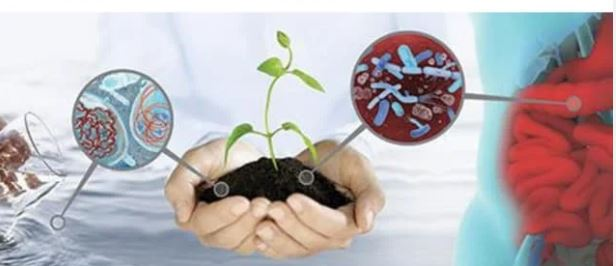
For academic research laboratories, QIAcube is a reliable automated DNA extraction solution that produces effective and reliable results. Researchers frequently choose QIAcube because of its key characteristics and functionalities, which include:
- Trusted Qiagen spin column technology: QIAcube uses Qiagen spin columns, which are known for their high-quality and reliability in capturing nucleic acids. This technology enables selective binding of high-quality DNA while removing unwanted cellular components, resulting in high yields of pure DNA suitable for downstream applications.
- Internal sensor technology: QIAcube is equipped with an internal sensor that monitors sample volume and quality, ensuring accurate results and minimizing the need for manual intervention.
- Customizable protocols: QIAcube offers customizable protocols that can be tailored to meet the unique needs of individual labs or research projects. This feature allows for greater flexibility and optimization of the DNA extraction process, resulting in more accurate genomic data.
- Rotor adapters: QIAcube offers a range of rotor adapters , enabling researchers to process a variety of sample types and sizes.
- Remote connectivity: QIAcube can be accessed remotely, allowing researchers to monitor and control the instrument from anywhere, at any time. This feature enables greater flexibility and convenience for busy labs.
A reliable and effective DNA extraction solution for academic research laboratories, QIAcube provides a number of essential features and functionalities. For labs looking to improve workflow and the quality of their DNA extractions, it is the perfect option thanks to its internal sensor, rotor adapters, customizable protocols, and remote connectivity.
How to Get Started with QIAcube: Tips for Successful Implementation in Academic Research Laboratories
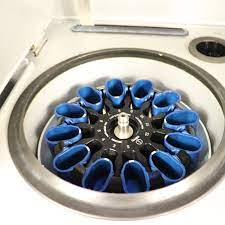
Academic research labs can fully automate the purification of nucleic acids, including genomic DNA, thanks to the potent tool QIAcube. Here are some pointers for a successful lab implementation if you’re new to QIAcube:
- Understand molecular biological techniques: Before getting started with QIAcube, it is important to have a strong understanding of the molecular biological techniques involved in nucleic acid purification. This will help you to better understand the instrument and optimize your protocols for maximum efficiency.
- Familiarize yourself with the instrument: QIAcube is a compact instrument that measures just 65 cm (25.6 inches) in width. It is important to read the user manual and become familiar with the instrument’s features and functions before use.
- Optimize your protocols: QIAcube offers customizable protocols that can be optimized to meet the unique needs of your lab or research project. Take the time to optimize your protocols to ensure optimal results.
- Use high-quality consumables: Quality consumables are essential to successful nucleic acid purification. Use only trusted products that are compatible with QIAcube, and ensure that you are using the correct consumables for your specific application.
- Perform regular maintenance: Regular maintenance of QIAcube is essential to ensure optimal performance and prolong the life of the instrument. Follow the manufacturer’s recommended maintenance schedule and perform any necessary repairs promptly.
You can guarantee a successful QIAcube implementation in your academic research lab by paying attention to these pointers. Any lab looking to streamline their workflow and enhance the calibre of their nucleic acid purifications will find QIAcube to be a useful tool thanks to its fully automated workflow, adaptable protocols, and high-quality results.
Case Studies: Real-Life Examples of Academic Research Labs Revolutionizing Their Workflow with QIAcube and Qiagen Spin Column Kits
QIAcube and Qiagen spin column kits have been transforming academic research laboratories by providing an efficient and reliable solution for DNA extraction. Let’s take a look at some real-life examples of academic research labs that have successfully revolutionized their workflow with the help of QIAcube and Qiagen spin column kits:
- University of California, San Francisco: The lab at UCSF was struggling with a manual DNA extraction process that was time-consuming and inconsistent. With the implementation of QIAcube and Qiagen spin column kits, the lab was able to fully automate their workflow and significantly reduce the time required for DNA extraction.
- University of Wisconsin-Madison: The lab at UW-Madison was seeking a more reliable and consistent method for DNA extraction. After implementing QIAcube and Qiagen spin column kits, the lab was able to improve the quality of their DNA extractions and reduce the amount of time required for the process.
- University of Cambridge: The lab at the University of Cambridge was struggling with a high volume of DNA extractions and needed a more efficient solution. With the help of QIAcube and Qiagen spin column kits, the lab was able to increase their throughput and improve the quality of their extractions.
These case studies demonstrate the powerful impact that QIAcube and Qiagen spin column kits can have on academic research laboratories. By streamlining workflows, improving the quality of extractions, and reducing the time required for DNA extraction, QIAcube and Qiagen spin column kits are a valuable investment for any lab seeking to optimize their research process.
Q&A: Answering Your Frequently Asked Questions about QIAcube, Spin Columns, Customized Protocols, and DNA Extraction in Academic Research Laboratories.
QIAcube and spin columns are crucial tools for efficient and reliable DNA extraction in academic research laboratories. Here are some frequently asked questions about these tools and their use in academic research:
Q: What is QIAcube?
A: QIAcube is an automated DNA extraction solution that streamlines the DNA extraction process in academic research laboratories. It uses spin column technology to purify and isolate DNA from various sample types.
Q: What are spin columns?
A: Spin columns are small columns filled with a resin that binds to nucleic acids, allowing for their purification and isolation from other cellular components. They are an essential component of the DNA extraction process.
Q: Can customized protocols be used with QIAcube?
A: Yes, customized protocols can be used with QIAcube to meet the unique needs of each academic research laboratory. QIAcube offers a variety of protocols for different sample types, and labs can also create their own custom protocols.
Q: How does QIAcube improve the DNA extraction process in academic research laboratories?
A: QIAcube automates the DNA extraction process, reducing the amount of hands-on time required and minimizing the potential for human error. It also uses advanced digital capabilities and internal sensors to ensure consistent and reliable results.
Q: What types of nucleic acid can be extracted using QIAcube and spin columns?
A: QIAcube and spin columns can be used to extract both genomic DNA and RNA from a variety of sample types, including blood, tissue, and bacteria.
Q: What is the width of QIAcube?
A: The QIAcube has a width of 65 cm (25.6 inches).
Q: What is the width of QIAcube rotor adapters?
A: The QIAcube rotor adapters have a width of 62 cm (24.4 inches).
How much does a QIAcube cost?
Average price for qiagenqiacube – $3797 based on 32 listings.
By utilizing QIAcube and spin columns, academic research laboratories can streamline their workflow, improve the quality and consistency of their DNA extractions, and ultimately enhance their research capabilities.
Q: What support equipment do I need for QIAcube?
A: The QIAcube will be best supported with Franek Technologies UPS . Be sure to contact us for a customized build to support your sensitive instruments.